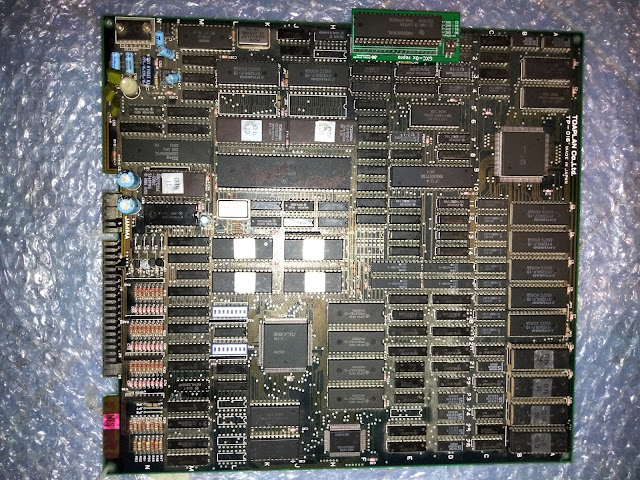A couple of years ago I donated 'furrtek' a Namco 'CUS120' custom IC.This part is found on System 1 hardware (Pac-Mania, Splatterhouse, Dragon Spirit, Galaga '88 to name few games that run on this arcade system) and comes in a QFP64 package :
This custom IC a sprite/tilemap mixer and also generates addresses to the three palette RAMs :
After some time 'furrtek' decapped the chip and imaged the die extracting its logics and drawing schematics .
He designed also a replacement and sent a sample to 'frsj8112' for testing.Unfortunately there was some issue :
The project was stalled for some time until 'Apocalypse' took care of it.At that time I designed a replacement too :
I did testing of the code prepared by him (the replacement is powered by a programmed CPLD).After some attempts he pinpointed where the problem lied and sent me a new code that worked perfectly.Here's testing on Splatterhouse and Pac-Mania PCBs :
Once again a huge thanks to 'furrtek' for his invaluable work (chip decapping, die tracing and schematics drawing) and to Apocalypse for his troubleshooting and fix.

















































